After sharing a few back to back quinoa recipes like Mediterranean Quinoa Salad, Lemon Quinoa and Avocado Quinoa Salad, I received a few emails from some of you asking me about rinsing quinoa.
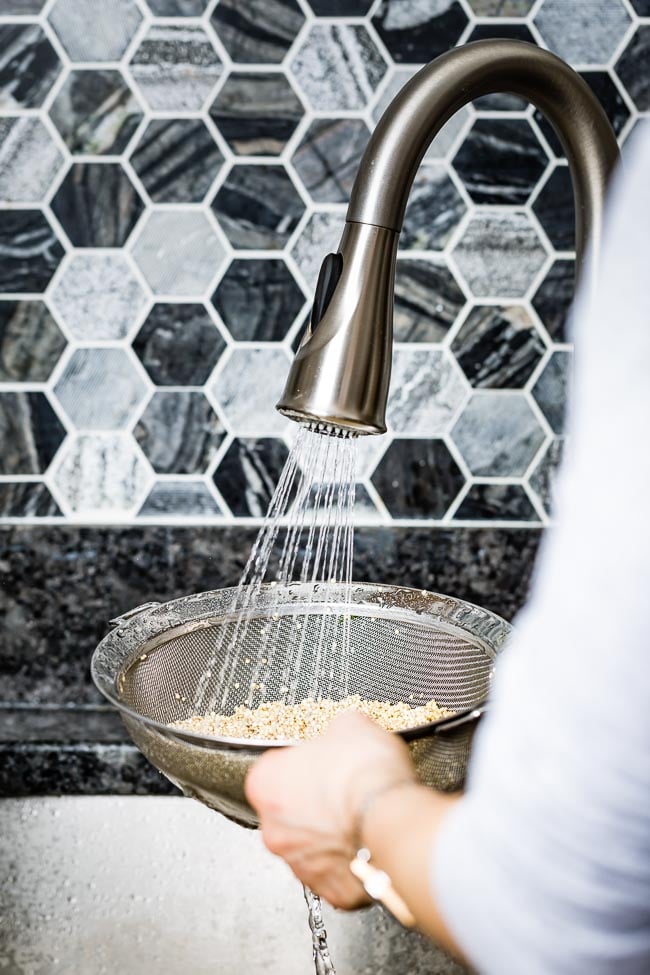
One reader asked, “Do I need to rinse quinoa before cooking even if the packaging says it is pre-washed?” Another one asked, “How can I rinse quinoa if I don’t have a fine-mesh strainer?” And another one wanted to know if it was a good idea to soak before cooking.
Regardless of your level of cooking, I think these are important questions and they should be answered. So in today’s post, we are going back to basics and covering everything you need to know about rinsing quinoa.
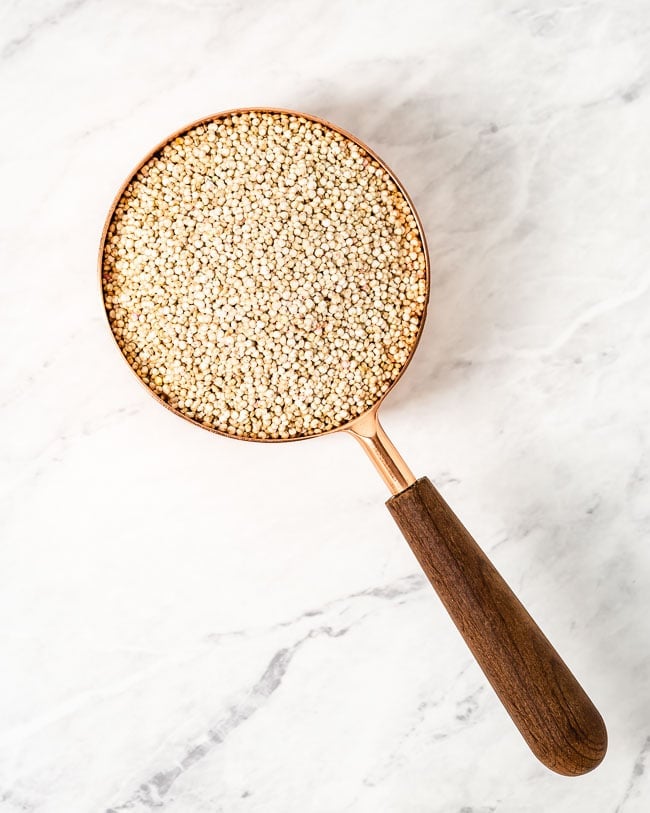
Why Rinse Quinoa?
Quinoa has a natural coating called saponin. Essentially, it is a self-defense mechanism for the quinoa plant to protect itself from microbes, fungi, birds, insects, and other foraging animals in its natural habitat.
According to this article I found in Science Direct, saponins have strong detergent properties that form stable foam in water solutions. In other words, when washed in water, saponins produce a foam similar to soap. It also has a bitter taste.
This article from Research Gate explains that virtually all quinoa that is sold in the markets today has already had the saponin removed using various advanced techniques that include hulling and washing followed by centrifuging and drying of the seeds.
Therefore, unless you are buying quinoa from a local farmer, the saponin will *mostly* be already removed.
So you might be wondering, “If that is the case, why rinse quinoa?”
I guess it boils down to your personal preference. Some people think that washing quinoa under cold running water helps remove any saponin residue that may have remained after processing. They believe doing so improves the taste of quinoa after it is cooked.
Rinsing quinoa is preferable, especially if you are sensitive to the bitter taste of saponin. I personally always wash quinoa before cooking as I am one of those people who can taste the bitter flavor of saponin. I also think that cooked quinoa tastes better when it is rinsed before cooking.
How To Rinse Quinoa:
The process of washing quinoa is quite simple. I find that the easiest way to rinse quinoa is by using a fine-sieve. Simply:
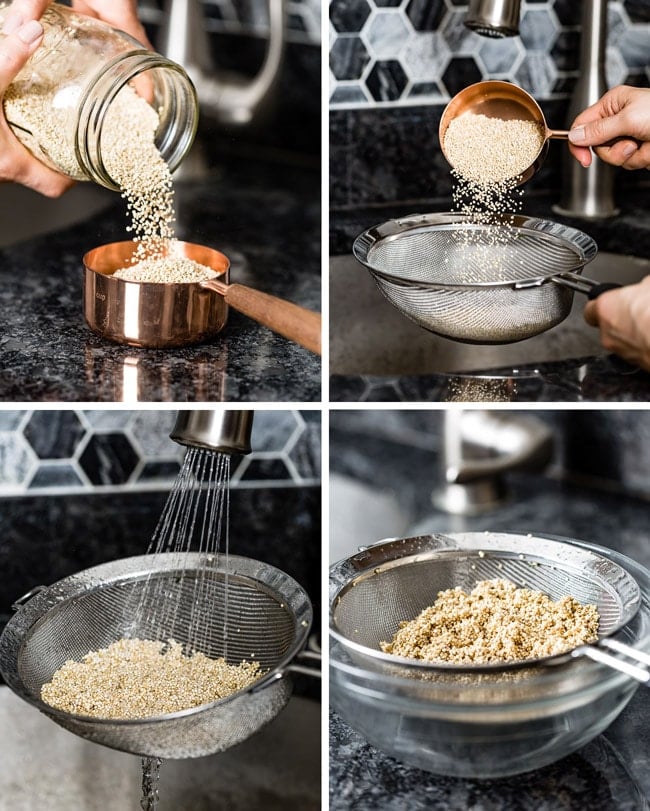
- Measure the amount of quinoa you want to cook.
- Place it in a fine-mesh strainer (affiliate link). The challenge with quinoa is that the seeds are often tiny. Therefore, a fine-mesh strainer (also called fine sieve) helps prevent seeds from falling through the holes.
- Rinse it under cold running water. At first, the water will be white-ish, but as you let it run it will get clear. This takes about 30-45 seconds.
- Drain quinoa fully. I usually set it over an empty bowl to make sure it drains completely before cooking it.
How To Rinse Quinoa Without A Strainer:
It is no secret that having a fine-mesh strainer will make your life easier when it comes to rinsing quinoa. But what if you don’t have one?
I guess like it is in any other situation, this problem requires a bit of creative thinking. For me, this means thinking outside the box and figuring out alternative ways to use everyday items in my kitchen.
So here are four kitchen items you can use to rinse quinoa without a fine strainer:
Cheese Cloth
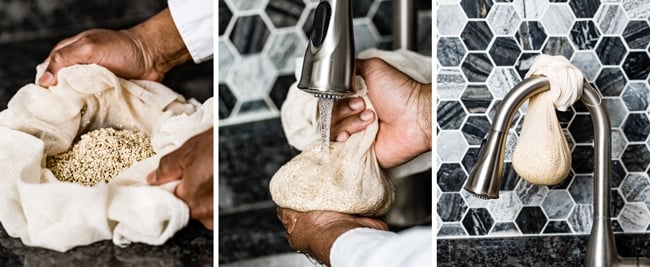
- Lay a cheesecloth (affiliate link) on the counter, place the quinoa in the middle, collect the edges making sure that it is in the middle.
- Rinse under cold water until it runs clear.
- Tightly squeeze it until all of the liquid is removed. Alternatively, you can hang it over the faucet and let the liquid drip by itself.
FUN TIP: As my husband and I were taking these photos, he said that if someone doesn’t have a fine-mesh strainer it is likely that they won’t have a cheesecloth or a nut milk bag in their kitchen.
If you are in that situation, you can also use an old t-shirt in the same way we used here. Simply, place raw quinoa in the middle of the t-shirt, collect it from the sides, and rinse under running water until it runs clear.
Nut Milk Bag
If you are someone who loves to make almond milk at home, you probably have a nut milk bag (affiliate link) at home. It works perfectly to wash quinoa as its holes are very small making it a great alternative to a fine-mesh strainer.
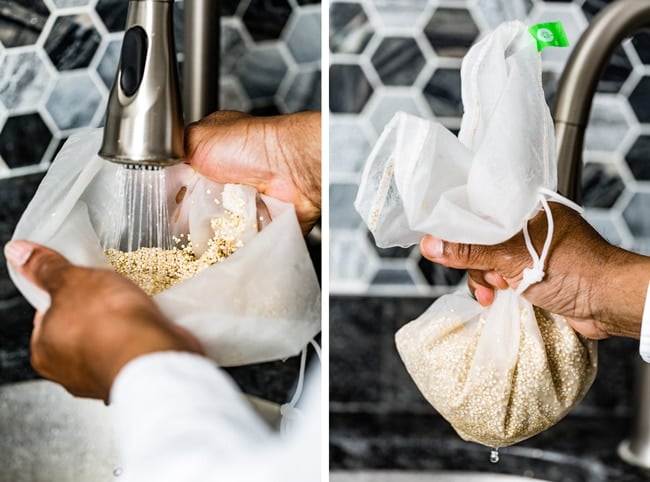
To do so:
- Fill a nut milk bag with quinoa.
- Wash it under cold running water until the water runs clear.
- Squeeze all the liquid out.
French Press:
Yup, you read it right. I am telling you to use your French press coffee maker (affiliate link).
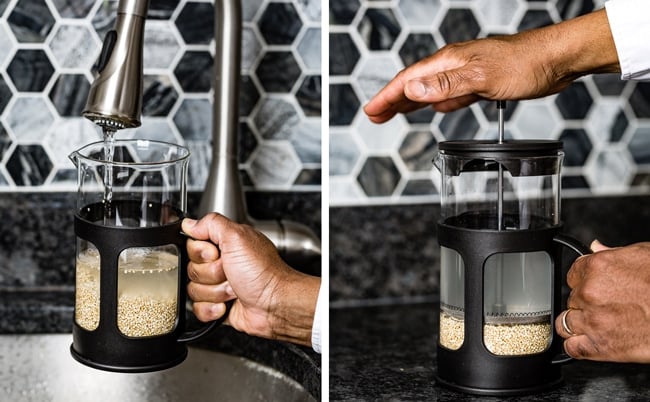
Simply place quinoa in your French press, fill it with cold water, and drain. You might have to do this several times until the water runs clear.
Coffee Filter in Your Coffee Maker:
I do not own one of these but if you have a coffee maker with a basket-style coffee filter such as this one (affiliate link) you can also use it as a strainer.
To do so, place raw quinoa in the basket and rinse under cold water until the water runs clear.
Do I Need To Rinse Prewashed Quinoa
As I was researching for this post, I wondered if I could skip the extra step of washing quinoa if I purchased no-rinse quinoa (also called Ready-to-Use Quinoa or Pre-washed Quinoa) that is sold in supermarkets. The below answer to my question came from the Cooks Illustrated:
Many brands of quinoa available in supermarkets today are prewashed and require no rinsing. We tested one prewashed brand against traditional quinoa to see if anything besides the bitterness was lost. We found that the traditional quinoa offered no flavor or textural advantages.
Citation: Cook’s Illustrated
Prewashed quinoa costs a few cents more per ounce, but we think the convenience is worth it.
Related: Want to learn about ways to make quinoa taste better? Get all my tips on making quinoa taste good along with my favorite seasoned quinoa recipes to incorporate this wholesome plant protein into your daily cooking.
Why Soak Quinoa Before Cooking:
According to Camilla V. Saulsbury’s cookbook, 500 Best Quinoa Recipes, if you are unsure whether the quinoa you purchased has had the saponins removed, it is best to soak it before cooking. She says this might be the case when you buy quinoa from the bulk foods section of your supermarket.
Additionally, based on this article from Dr. Axe, like it is with other grains and seeds, pre-soaking quinoa helps remove some of the naturally occurring phytic acids in the seed, which helps improve digestibility. It also increases the availability of its nutrients.
To soak quinoa:
- Place it in a bowl and cover it with enough water to cover it by 1-inch.
- Let stand, stirring a few times for at least 1 hour or overnight.
- Drain it through a fine-mesh sieve (or use the other methods I mentioned above) and rinse thoroughly under cold water for 30-60 seconds.

There you have it, friends. Everything you need to know on how to rinse quinoa properly with or without a strainer. I hope this answered some of your questions on the subject. If you have more questions feel free to drop them in the comments below.
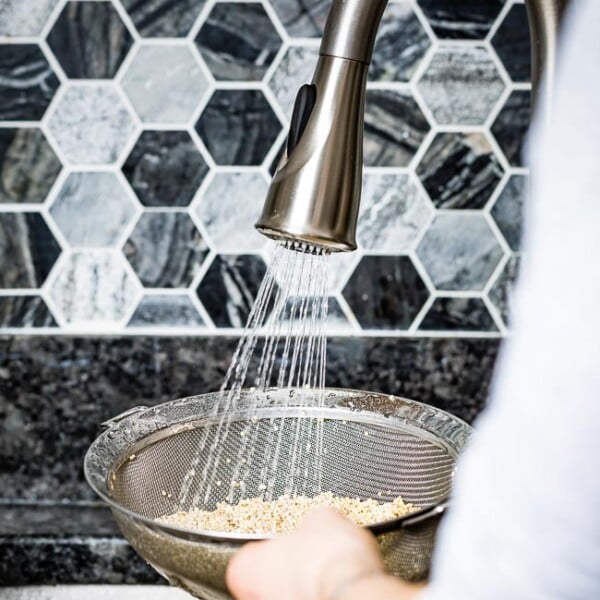
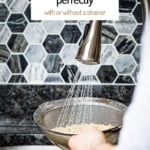

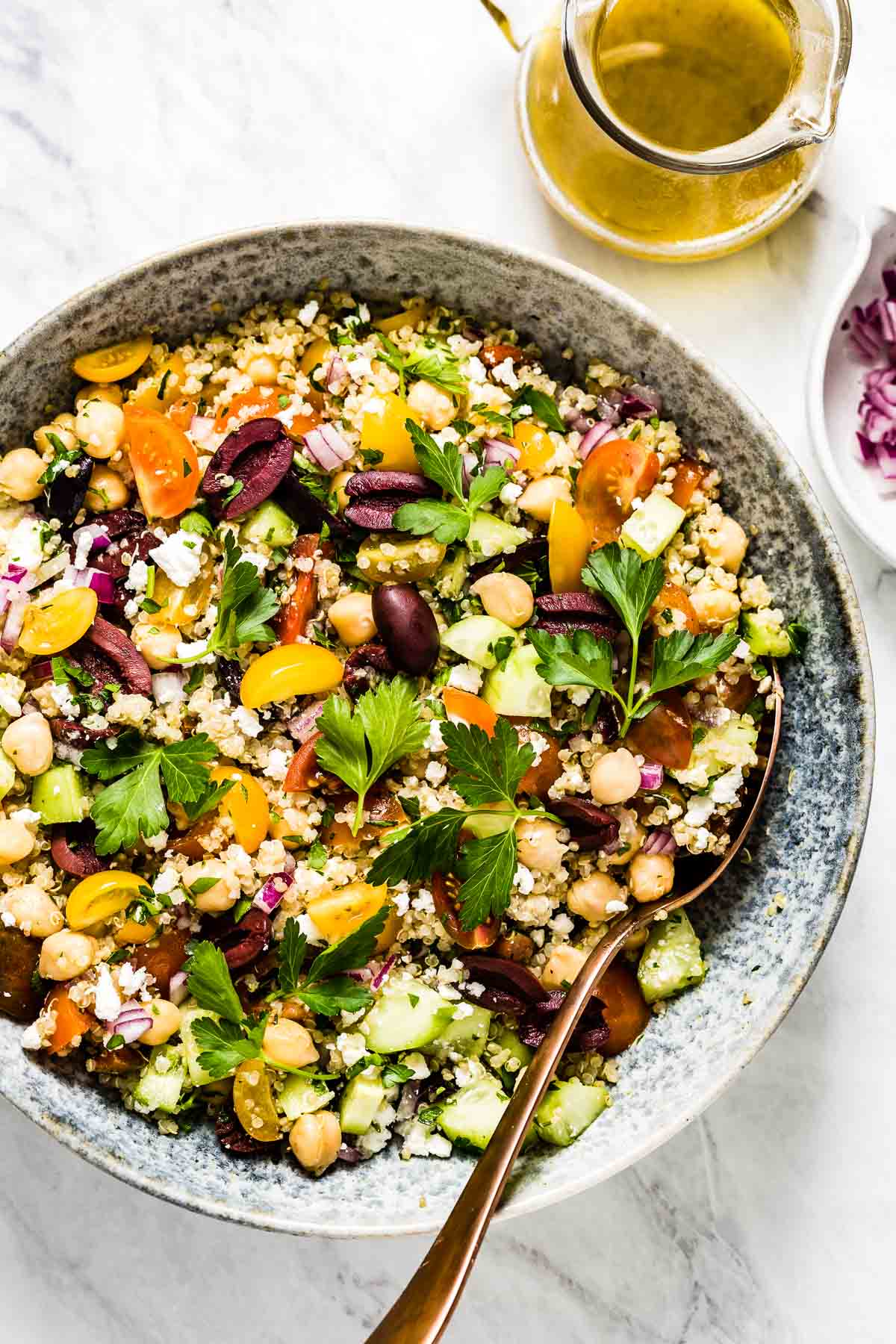
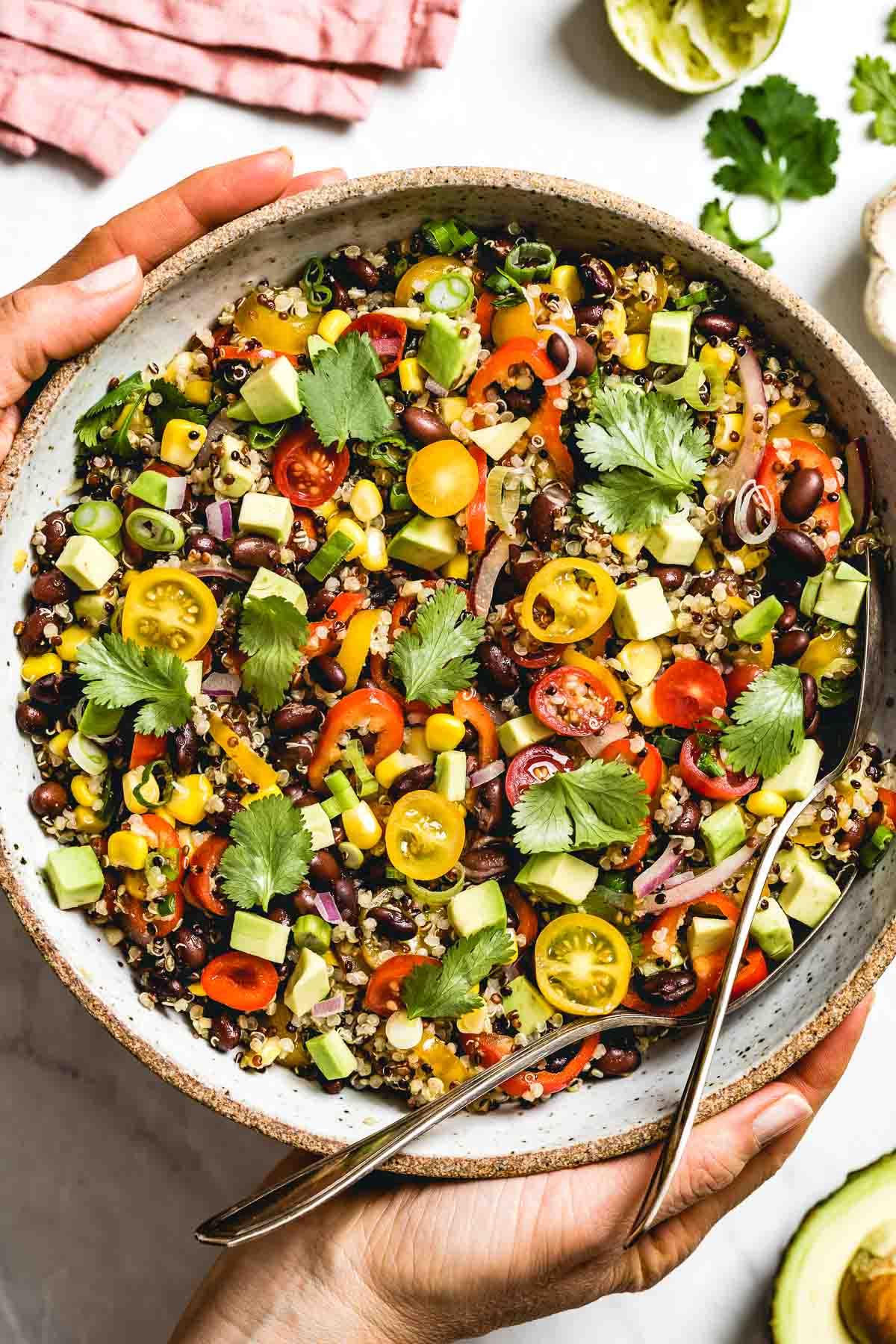










There is another way. I put 1/2 cup quinoa in a 2 cup measuring cup. Stir well. Slightly cloudy water and a few empty shells float to the top after it sits a few minutes. Then pour off the water, you do do lose a tiny bit of quinoa. I did thus twice. The water then looked clear. I stirred mine two three times just to make sure all dust and debre went to the top.
Noted. Thanks for sharing.